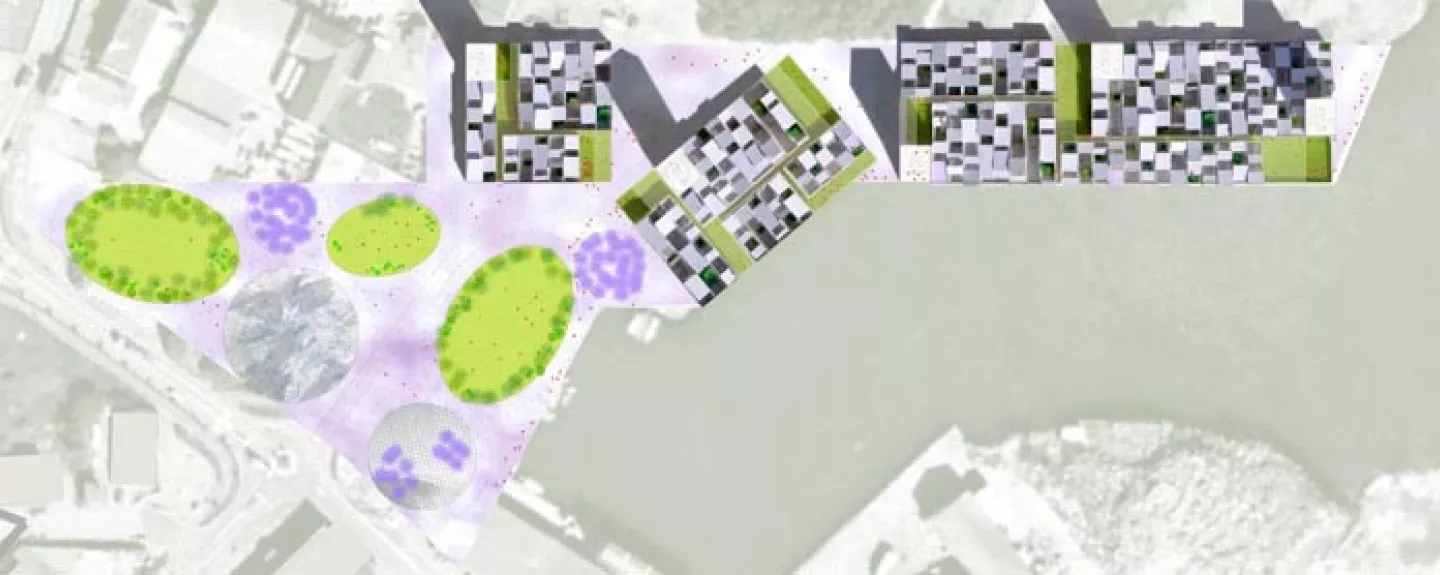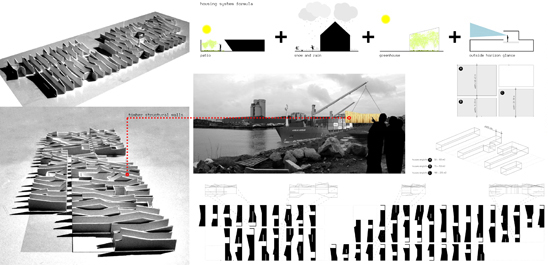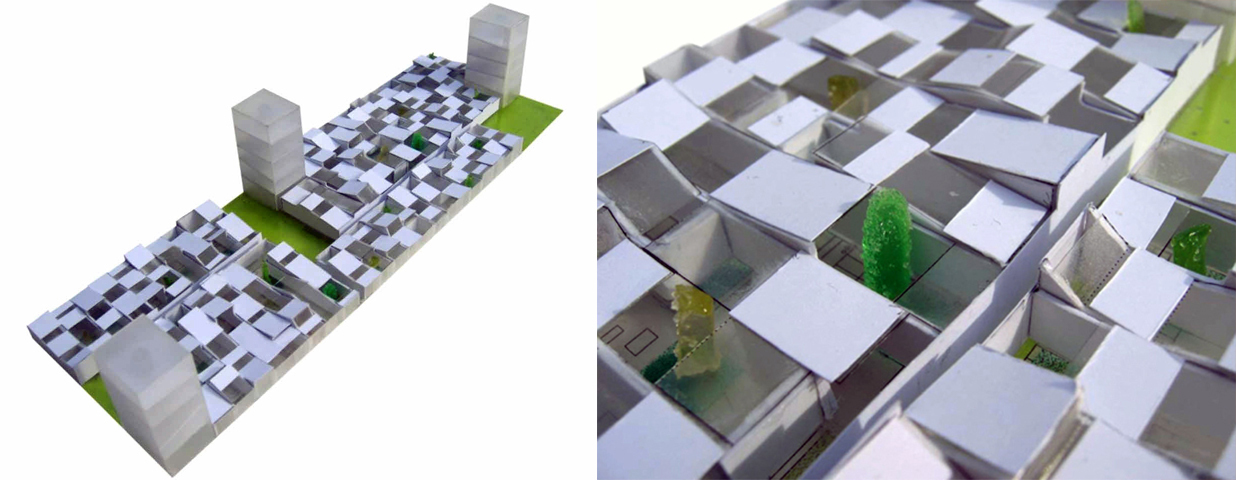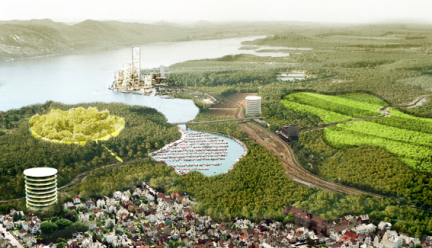Project:
Beyond The Horizon

About
-
A traditional saying has marked Stavanger’s history: “Looking beyond the horizon”. The sea as the place to project dreams, trips and life. Fishing, the canning industry and oil have defined both its several growth phases and urban morphology.
Relying on culture and laziness; culture seen as learning from what others have already learnt; laziness seen as advancing from what culture has already set. Climatic consciousness becomes necessary at this latitude. The adopted strategy comes from certain intuitive thought patterns not directly related with architectural knowledge but, in this case, animal. Penguins will be the main characters of this brief story: their knowledge about how to gather on the ground floor to minimize heat loss and how to get distance enough to avoid casting shadows on each other. Towers, thus, maximize their solar exposure. Due to its weather, Stavanger uses its extra-size local housing typology to provide indoor places for socializing. As any social event never happens by chance, a public net of non-programmed equipped indoor places and open to invention is suggested.
Lervig is the result of its industry and harbour condition. Three canning typologies occupy the new Lervig: a) square cans (sardines): housing and mixed uses as penguin colonies b) round cans (tuna): facilities c) oval cans (mackerel): green spaces. The gaps between cans provide place for singular pieces like car parking, public buildings, bus stops.

-
The site, which lies on the edge of the city centre of Stavanger, is an industrial area in decline. It is now being slowly transformed into new housing, offices, and cultural facilities. The competition challenges participants to make strategic illustrations of how to further develop existing physical, social, and cultural resources.
The two awarded projects (winner and runner up) represent two different strategies, one that focuses on a high quality housing and mixed-use building structure for the competition site (Winning project "Beyond the horizon"), and one that restructures the whole competition area as a field for a new, long-term urban ecological development (Runner up project "Infranature")
Both projects discussed how the study area could respond to the local cultural and ethnic multitude, its mix of functions and living conditions.
Each project investigates possible development trends that the jury found were very interesting comments to the newly adopted regulation plan.
Beyond The Horizon proposes to continue the fragmented urban structure. The authors state that: "New approaches tend to rebuild (...) by using completely different parameters. Both memory and traces of the place are usually forgotten." Illustrations show how this strategy is applied to the whole study area by taking the proposed architecture and public space typologies (cans) for the site and copying it within the study area. A series of voids and connecting spaces appear between the cans.
The project suggests an interesting alternative strategy to conventional urban assemblies. The implications of the urban strategy is explored for the site, but remains schematic and unanswered for the park and study area. The jury would have liked to see how this abstract proposal could be worked more sensibly into the existing urban structure.
On the level of the analysis, Beyond The Horizon gives a very convincing argumentation for the project proposed on the site. Still, the project could have been enhanced by a further investigation of how the fragmented programmatic qualities of Urban Sjofront could influence the architecture. The jury discussed if there could be more substantial urban activities on the ground level of the towers, while some public programming could be allowed to infiltrate both Kasbah and tower housing typologies.
-
Author(s)
YIC studio
Javier Lorenzo Yáñez Molina (ES),
Vicente Iborra Pallares (ES)
Ivan Capdevila Castellanos (ES)
Competition team
Javier LORENZO YÁÑEZ MOLINA (ES)
Vicente IBORRA PALLARÉS (ES)
Iván CAPDEVILA CASTELLANOS (ES)
architects
Jesús SORIANO RINCÓN (ES)
Ángel QUINTANAR CAMACHO (ES)
Alejandro ALIAGA ANTÓN (ES)
Ignacio LLORENS CANOSA (ES)
Sara VERGEL GONZÁLEZ (ES)
architecture students

